Hallo!
Civil War revolver cap fragment jams... myth or reality?
There has been a long standing discussion of the nature of Period versus Modern percussion caps first from the historical perspective of “musket” caps being brass instead of copper, and having different strength “fulminate of mercury” type explosive charges. And then on a more practical note that of caps fragmenting and jamming the action of “cap and ball” revolvers.
For the moment setting aside the “safety” built into the cavalry type “manual of arms” (having a loaded pistol muzzle vertical in the hair and not pointed at one’s own horse, or surrounding horses, or surrounding troopers), the sundry “manuals” dealt with cap fragments.
How?
Simply put, with the barrel being vertical, as the pistol was cocked, a loose spent cap or cap fragment would in theory and mostly practice fall out instead of down into the hammer base opening:
Draw—PISTOL.
Two times.
1. At the first command, unbuckle the holster or pistol-case, seize the pistol by the handle with the right hand, holding it between the palm of the hand and the last three fingers, the forefinger
resting on the guard, the thumb on the handle.
2. At the second command, draw out the pistol and elevate it,
the guard to the front, the wrist at the height of, and six inches
from, the right shoulder.
Then…
The instructor, wishing to fire, will command:
READY.
One time, two motions.
1. Place the pistol in the left hand, the little finger touching the key, the barrel nearly vertical, the muzzle a little inclined to the left and front, the guard to the front, the thumb on the head of the hammer, the forefinger along the guard.
2. Cock the pistol, and bring it to the position of draw pistol.
Note:—A little practice will enable the trooper to cock the revolver without the assistance of the left hand.
At the command: READY. incline the muzzle of the pistol to the front, the wrist remaining six inches from the shoulder; place the first joint of the thumb on the head of the hammer, and cock it by an extension of the arm, and resume the position of draw pistol.
AIM.
One time.
Lower the pistol, the arm half extended, and place the forefinger lightly on the trigger, the muzzle directed to the height of a man's waist.
FIRE.
One time.
Press the forefinger steadily on the trigger, fire, and retake the position of draw pistol.
By and large, it worked well enough. But not perfectly.
There a number of attempted remedies at the time, but none really took off. The closest thought was
Benjamin Kittredge’s December 1863 patent application that after some initial rejection for being too similar to others was granted in January of 1864.
Kittredge ran a successful sporting goods and firearm store in Cincinnati, Ohio. He sold military Arms to Kentucky, Indiana, Kansas, and Missouri. But he is most famous as growing to become Samuel Colt’s number one distributor and while not known for his patent or his CW business, he is most famous being credited with coming up with the marketing names of “Thunderer” and “Lightning” for Colts Model 1877 revolvers and even more so for Colt ‘s M1873 “Peacemaker.” And he sold more Buntline Special Colts than anyone else.
Anyways, Kittredge’s idea was to create a ¾ inch flat steel moon shaped “shield” that was screwed in place with two screws into a revolver’s recoil shield. What it essentially did was decrease the gap or distance from the cap sitting on the cone/nipple and the recoil shield blocking it from moving backwards to fall under the hammer or jam the cylinder movement. Being roughly only say three quarters around, the shield held the caps in place until they rotated or cycled clock ways and got to a milled out depression or scoop at the top of the “capping groove” or recess in the frame’s right side. There, any loose caps or pieces harmlessly fell out as the cylinder rotated around when the revolver was held right side down.
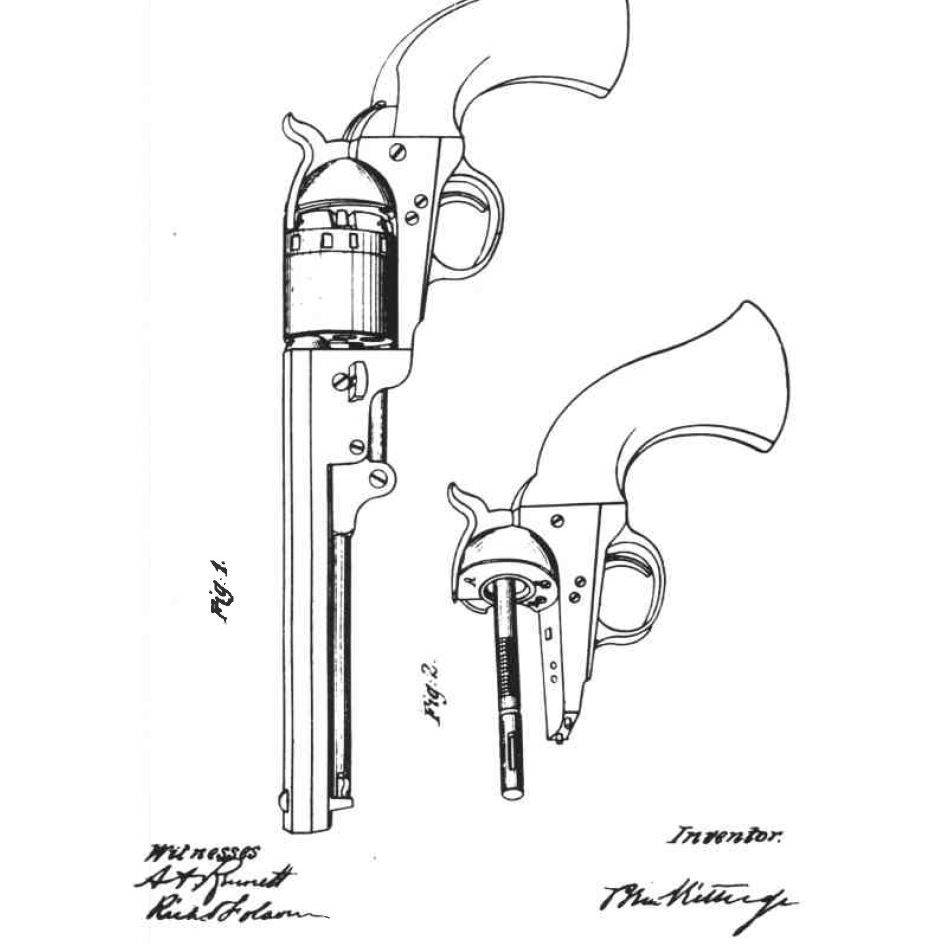
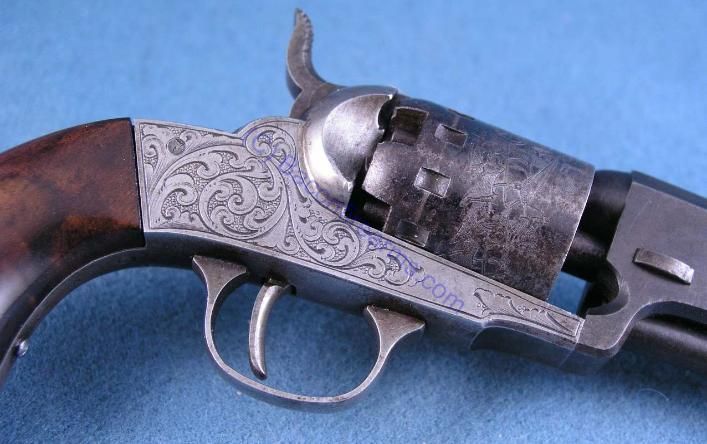
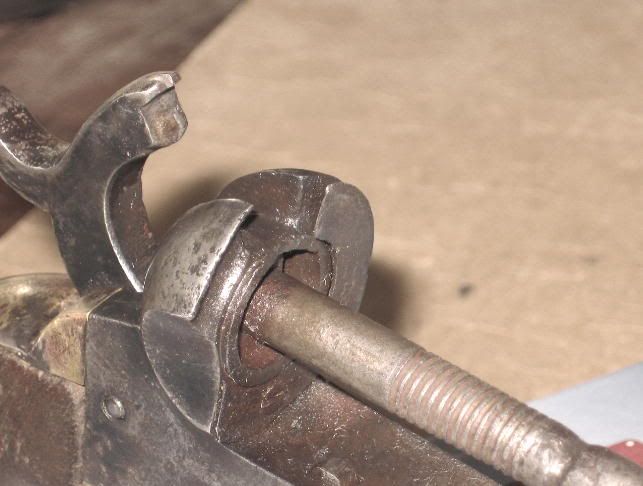
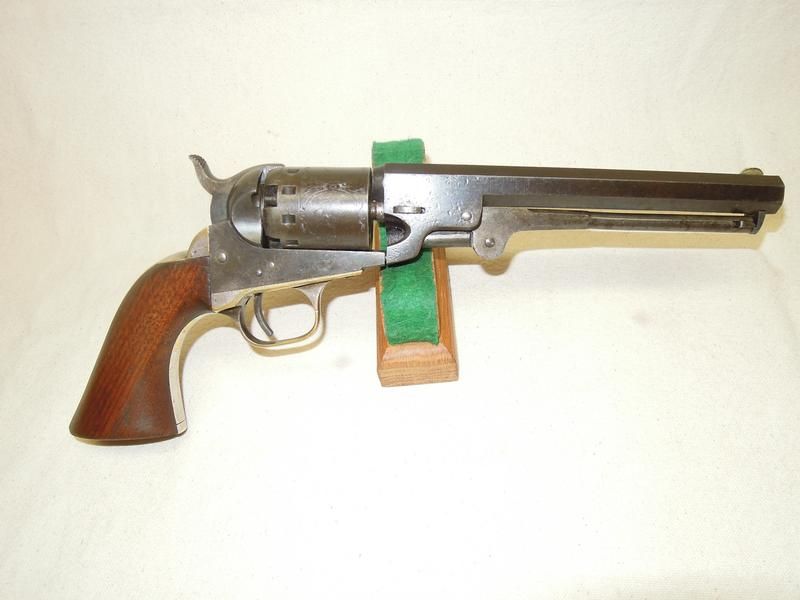
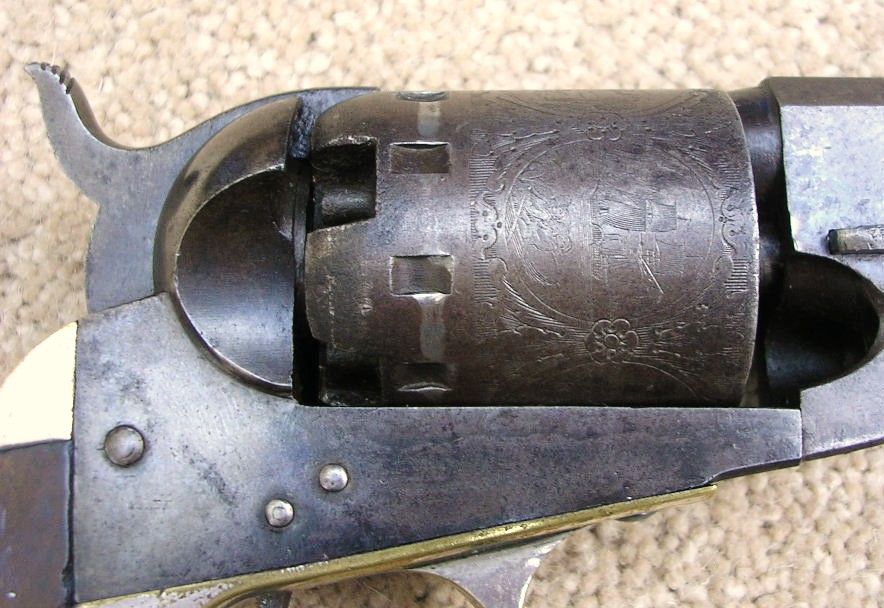
Brilliant. And may be brilliant enough that when he resubmitted his patent request, it was granted in March of 1864. But not brilliant enough that any one wanted it.
Samuel Colt has received his revolver patent in England in 1835, and in the US in 1836. In 1848 he applied for an extension on the 1850 expiration having seen the rebirth of his potential future. Amid some scandal of bribes, Colt was granted a “reissue” lasting seven (7) years. In 1856 when it expired, basically there was an explosion of Colt clones some vigorously challenged and pursed by Colt in court (and winning), others not so much.
As a result, there are a number of Colt clones and imitators. Enter the Manhattan Firearms Company.
The “Manhattan Firearms Company” was created in 1856 by a group of New Jersey businessman but was incorporated in New York City although, the company never produced any firearms in that city. The first factory was built in Norwich, CT, and enlisted the services of Thomas Bacon as the factory superintendent. Bacon would have a falling out and was kicked out going on to make his own Manhattan clone of Colt clones company in Norwich under his name and leading to other company names like Union or Western.
With Colt having tied up the market, and looking at a phenomenal rise in low or lower cost mass produced personal self-defense type civilian firearms, Manhattan made of a variety of single shot percussion pistols in .31, .34 and .36 calibers with bar hammers, and a .36 single shot percussion pistol with a conventional or “shotgun” hammer. They also produced a line of double action percussion pepperbox pistols in 3, 5 and 6 shot variants.
Perhaps remarkably so, Manhattan chose to ignore military contracts totally, and in 1858 introduced their first percussion revolver, a .31 pocket model which was a clone of the Colt M1849 Pocket model. It was a success. In March of 1859, they moved to Newark, NJ and started production of their single most successful and long lived product line, the .36 Caliber “Navy” Revolver. The pistol was clever, because it combined the stopping power of a .36 caliber ball from the Colt M1851 Navy belt/holster pistol, but had the comfortable and concealable compact frame of the Colt M1848 Pocket model.
Manhattan jumped on Kittredge’s new patent, putting it in production on their Type III (aka Series III) “Navy” revolvers then in production since September 1861. It was a big success, selling 4,000 in 1861, and then some 78,000 by the time the company went out of business in 1868 finishing with the Type (Series) IV beginning on April 1, 1864 . And, in a “if you can’t beat ‘em, join ‘em” Colt introduced two similar, competing 5-shot, small frame .36 caliber models during 1862 and 1863, the Pocket Police and the Pocket Model of Navy Caliber.
And as he did for Colt later on, Kittredge served as a distributor for Manhattan, having his own version of the Type IV revolvers stamped on the left side of the barrel “KITTREDGE / CIN. O..”
While Kittredge could have revolutionized the cap and ball revolver industry, he was “too late.” No one was interested other than Manhattan, plus the writing on the wall loomed ahead that the C & B revolver was on its way out in a few years phased out by the arrival of the metallic cartridge.
Ironically perhaps, Kittredge only (mostly but not entirely) solved only have the problem of spent caps and cap fragments. What his “cap shield” did do was help keep cap bits out of the cylinder’s works as it revolves. But it did nothing much to prevent caps or cap fragments from falling into the hammer works.
Except for the possibility of a private purchase officer’s sidearm, there is not much about a Kittredge Patent “Cap Shield” or a Manhattan revolver to spark a cavalryman’s interest or passing notice. But, IMHO, it is an interesting side-note in history.
And…
While not related to reenacting or living history, the issue of cap fragments is still around mostly in the area of N-SSA shooting and also most particularly Cowboy Action Shooting (SASS/NCOWS). Once again, the Kittredge idea has resurfaced, and perhaps even been approved upon that NUG keeps caps and cap bits out of the hammer works (but not the cylinder works).
It consists of installing a post where the hammer sits on the frame, and drilling a “relief” in the underside of the hammer’s nose to allow it to sit on the post.
Oh, for more historical uses, one can make the stud or pin removable, and swap out the hammer with a factory replacement.
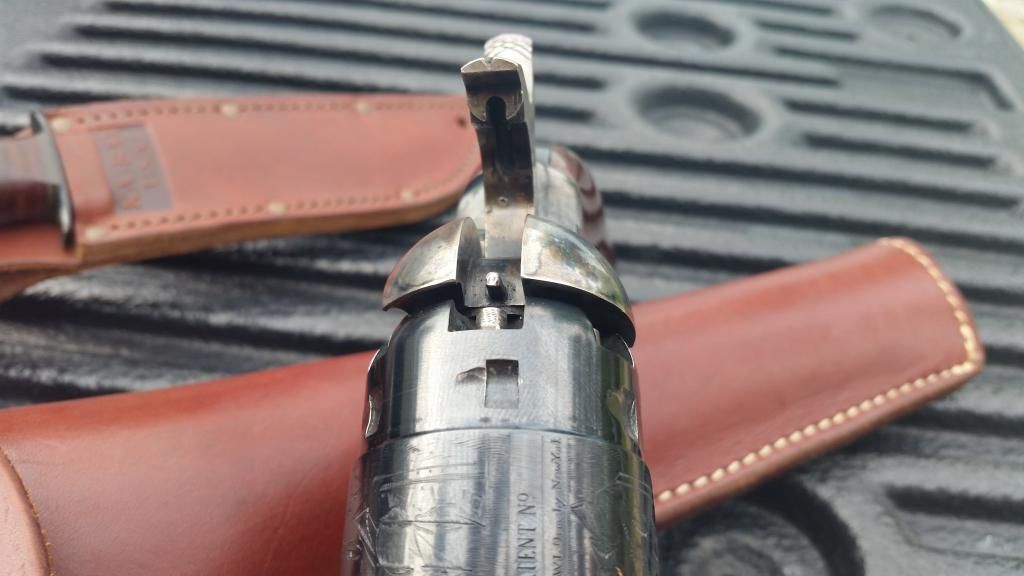
Curt
Civil War revolver cap fragment jams... myth or reality?
There has been a long standing discussion of the nature of Period versus Modern percussion caps first from the historical perspective of “musket” caps being brass instead of copper, and having different strength “fulminate of mercury” type explosive charges. And then on a more practical note that of caps fragmenting and jamming the action of “cap and ball” revolvers.
For the moment setting aside the “safety” built into the cavalry type “manual of arms” (having a loaded pistol muzzle vertical in the hair and not pointed at one’s own horse, or surrounding horses, or surrounding troopers), the sundry “manuals” dealt with cap fragments.
How?
Simply put, with the barrel being vertical, as the pistol was cocked, a loose spent cap or cap fragment would in theory and mostly practice fall out instead of down into the hammer base opening:
Draw—PISTOL.
Two times.
1. At the first command, unbuckle the holster or pistol-case, seize the pistol by the handle with the right hand, holding it between the palm of the hand and the last three fingers, the forefinger
resting on the guard, the thumb on the handle.
2. At the second command, draw out the pistol and elevate it,
the guard to the front, the wrist at the height of, and six inches
from, the right shoulder.
Then…
The instructor, wishing to fire, will command:
READY.
One time, two motions.
1. Place the pistol in the left hand, the little finger touching the key, the barrel nearly vertical, the muzzle a little inclined to the left and front, the guard to the front, the thumb on the head of the hammer, the forefinger along the guard.
2. Cock the pistol, and bring it to the position of draw pistol.
Note:—A little practice will enable the trooper to cock the revolver without the assistance of the left hand.
At the command: READY. incline the muzzle of the pistol to the front, the wrist remaining six inches from the shoulder; place the first joint of the thumb on the head of the hammer, and cock it by an extension of the arm, and resume the position of draw pistol.
AIM.
One time.
Lower the pistol, the arm half extended, and place the forefinger lightly on the trigger, the muzzle directed to the height of a man's waist.
FIRE.
One time.
Press the forefinger steadily on the trigger, fire, and retake the position of draw pistol.
By and large, it worked well enough. But not perfectly.
There a number of attempted remedies at the time, but none really took off. The closest thought was
Benjamin Kittredge’s December 1863 patent application that after some initial rejection for being too similar to others was granted in January of 1864.
Kittredge ran a successful sporting goods and firearm store in Cincinnati, Ohio. He sold military Arms to Kentucky, Indiana, Kansas, and Missouri. But he is most famous as growing to become Samuel Colt’s number one distributor and while not known for his patent or his CW business, he is most famous being credited with coming up with the marketing names of “Thunderer” and “Lightning” for Colts Model 1877 revolvers and even more so for Colt ‘s M1873 “Peacemaker.” And he sold more Buntline Special Colts than anyone else.
Anyways, Kittredge’s idea was to create a ¾ inch flat steel moon shaped “shield” that was screwed in place with two screws into a revolver’s recoil shield. What it essentially did was decrease the gap or distance from the cap sitting on the cone/nipple and the recoil shield blocking it from moving backwards to fall under the hammer or jam the cylinder movement. Being roughly only say three quarters around, the shield held the caps in place until they rotated or cycled clock ways and got to a milled out depression or scoop at the top of the “capping groove” or recess in the frame’s right side. There, any loose caps or pieces harmlessly fell out as the cylinder rotated around when the revolver was held right side down.





Brilliant. And may be brilliant enough that when he resubmitted his patent request, it was granted in March of 1864. But not brilliant enough that any one wanted it.
Samuel Colt has received his revolver patent in England in 1835, and in the US in 1836. In 1848 he applied for an extension on the 1850 expiration having seen the rebirth of his potential future. Amid some scandal of bribes, Colt was granted a “reissue” lasting seven (7) years. In 1856 when it expired, basically there was an explosion of Colt clones some vigorously challenged and pursed by Colt in court (and winning), others not so much.
As a result, there are a number of Colt clones and imitators. Enter the Manhattan Firearms Company.
The “Manhattan Firearms Company” was created in 1856 by a group of New Jersey businessman but was incorporated in New York City although, the company never produced any firearms in that city. The first factory was built in Norwich, CT, and enlisted the services of Thomas Bacon as the factory superintendent. Bacon would have a falling out and was kicked out going on to make his own Manhattan clone of Colt clones company in Norwich under his name and leading to other company names like Union or Western.
With Colt having tied up the market, and looking at a phenomenal rise in low or lower cost mass produced personal self-defense type civilian firearms, Manhattan made of a variety of single shot percussion pistols in .31, .34 and .36 calibers with bar hammers, and a .36 single shot percussion pistol with a conventional or “shotgun” hammer. They also produced a line of double action percussion pepperbox pistols in 3, 5 and 6 shot variants.
Perhaps remarkably so, Manhattan chose to ignore military contracts totally, and in 1858 introduced their first percussion revolver, a .31 pocket model which was a clone of the Colt M1849 Pocket model. It was a success. In March of 1859, they moved to Newark, NJ and started production of their single most successful and long lived product line, the .36 Caliber “Navy” Revolver. The pistol was clever, because it combined the stopping power of a .36 caliber ball from the Colt M1851 Navy belt/holster pistol, but had the comfortable and concealable compact frame of the Colt M1848 Pocket model.
Manhattan jumped on Kittredge’s new patent, putting it in production on their Type III (aka Series III) “Navy” revolvers then in production since September 1861. It was a big success, selling 4,000 in 1861, and then some 78,000 by the time the company went out of business in 1868 finishing with the Type (Series) IV beginning on April 1, 1864 . And, in a “if you can’t beat ‘em, join ‘em” Colt introduced two similar, competing 5-shot, small frame .36 caliber models during 1862 and 1863, the Pocket Police and the Pocket Model of Navy Caliber.
And as he did for Colt later on, Kittredge served as a distributor for Manhattan, having his own version of the Type IV revolvers stamped on the left side of the barrel “KITTREDGE / CIN. O..”
While Kittredge could have revolutionized the cap and ball revolver industry, he was “too late.” No one was interested other than Manhattan, plus the writing on the wall loomed ahead that the C & B revolver was on its way out in a few years phased out by the arrival of the metallic cartridge.
Ironically perhaps, Kittredge only (mostly but not entirely) solved only have the problem of spent caps and cap fragments. What his “cap shield” did do was help keep cap bits out of the cylinder’s works as it revolves. But it did nothing much to prevent caps or cap fragments from falling into the hammer works.
Except for the possibility of a private purchase officer’s sidearm, there is not much about a Kittredge Patent “Cap Shield” or a Manhattan revolver to spark a cavalryman’s interest or passing notice. But, IMHO, it is an interesting side-note in history.
And…
While not related to reenacting or living history, the issue of cap fragments is still around mostly in the area of N-SSA shooting and also most particularly Cowboy Action Shooting (SASS/NCOWS). Once again, the Kittredge idea has resurfaced, and perhaps even been approved upon that NUG keeps caps and cap bits out of the hammer works (but not the cylinder works).
It consists of installing a post where the hammer sits on the frame, and drilling a “relief” in the underside of the hammer’s nose to allow it to sit on the post.
Oh, for more historical uses, one can make the stud or pin removable, and swap out the hammer with a factory replacement.

Curt





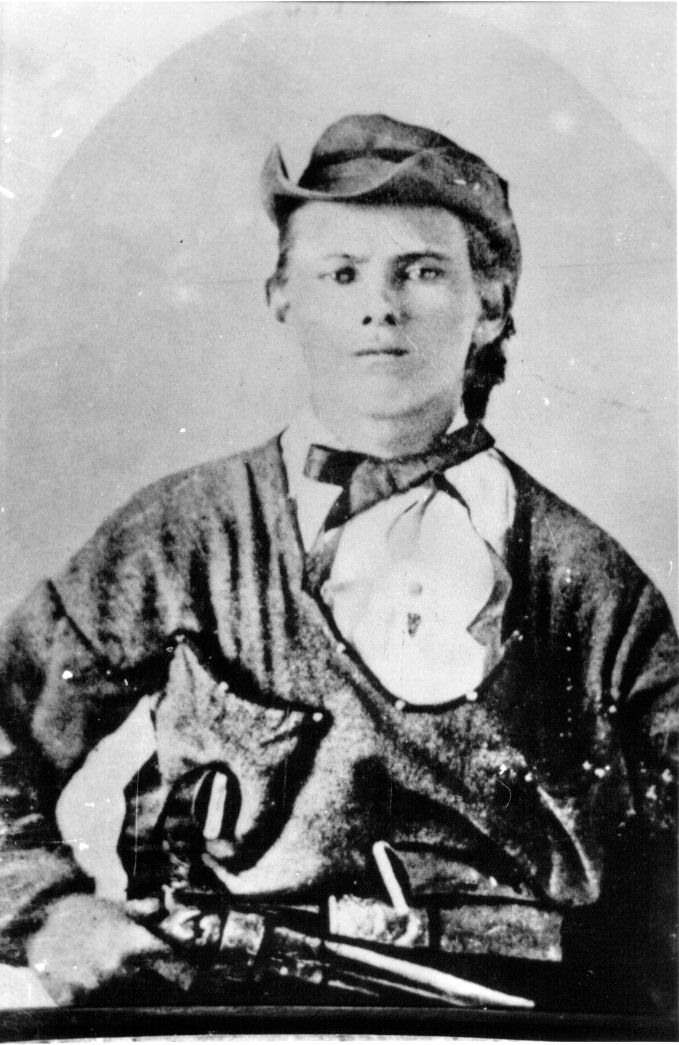
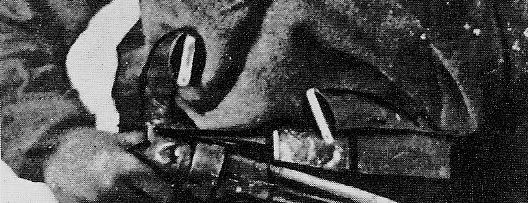
Comment